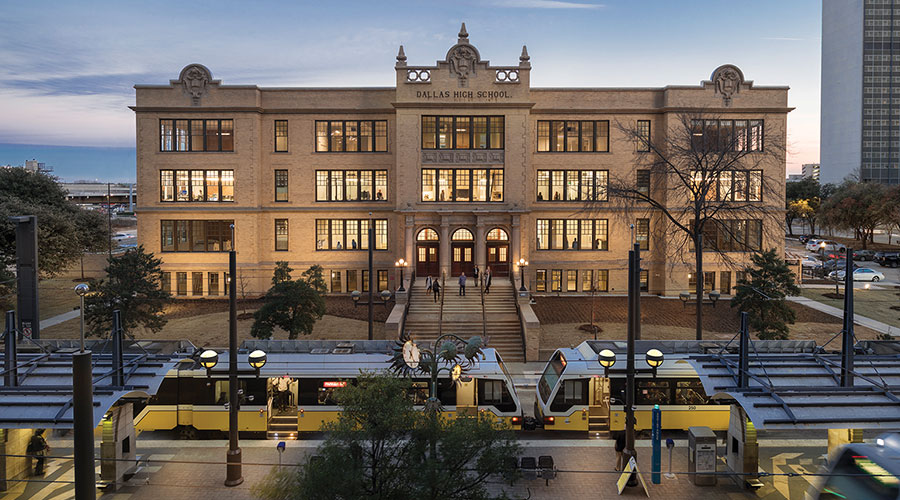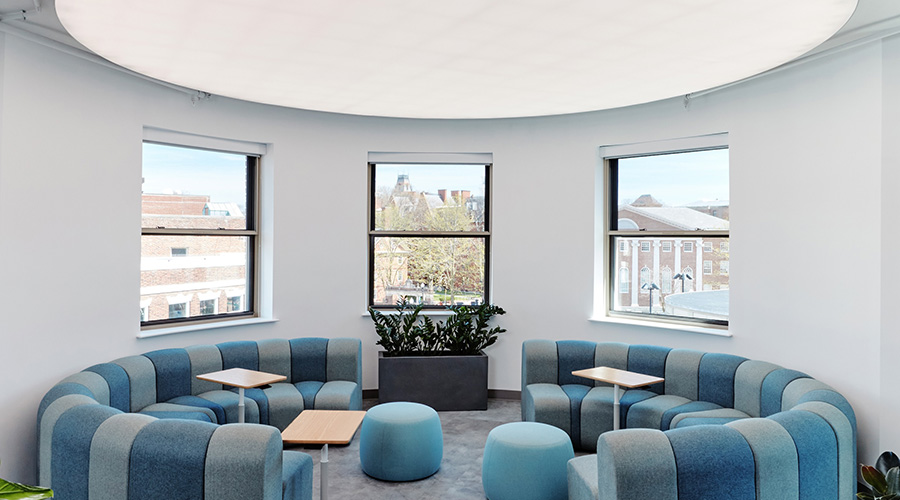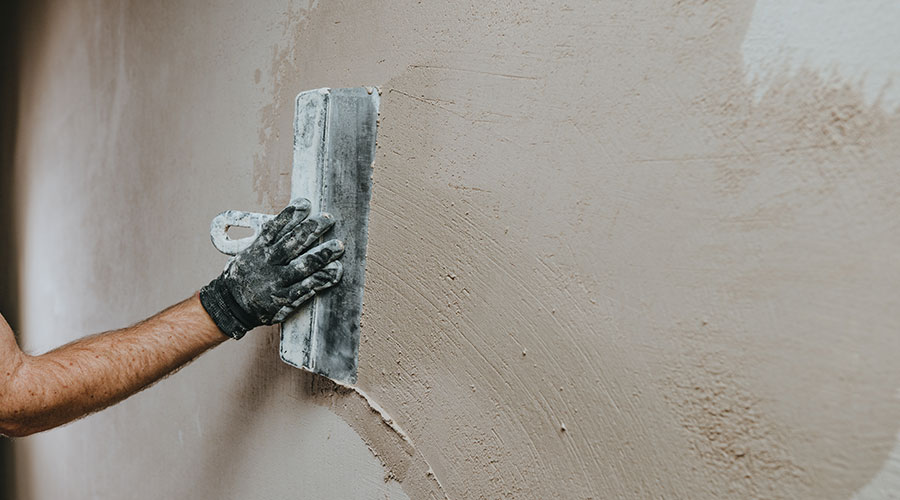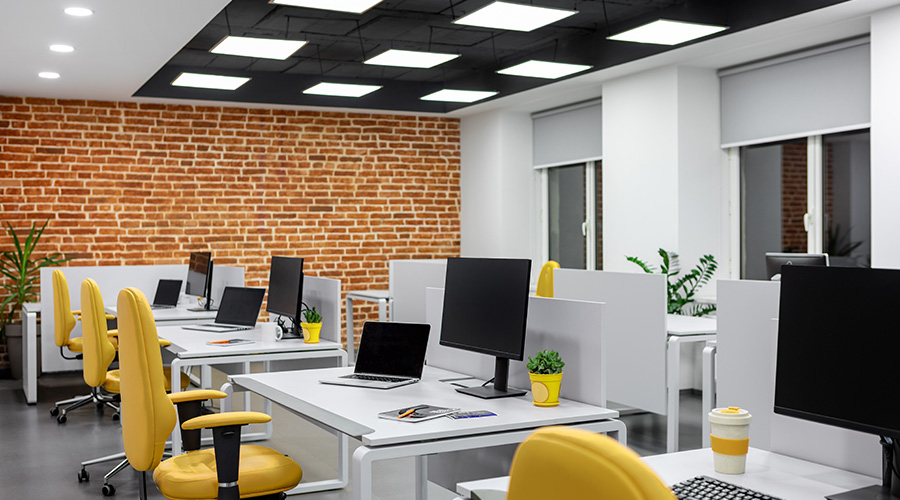Metal Buildings Grow Up Green
As METAL BUILDING OPTIONS have increased, so has focus on environmental benefits
OTHER PARTS OF THIS ARTICLEPt. 1: This Page
Whenever facility executives hear the phrase “sustainable building,” simultaneous hope and trepidation may cross their minds. Hope that green building practices can save their organizations money and make building occupants healthier and happier. Trepidation that their organizations may fall prey to slick marketing gimmicks and hype, buying into a structure or building materials that simply do not stand the test of time.
How does one choose? And what are the best available options? Much depends upon location and the emphasis an organization places on certain aspects of green building.
Representatives from the Metal Building Manufacturers Association (MBMA) say that metal building systems are one possible answer for facility executives in the hunt for lowered construction costs, increased operational savings and durable buildings.
“Some people hear ‘metal buildings’ and think ‘tin shed,’” says Keith Fischer, chairman of MBMA. “But it is a lot more than that. We’ll build anything from five stories down, which can include aircraft hangers, commercial buildings, banks, car dealerships, churches and more.”
Today’s metal building systems are not pre-fabricated and purely utilitarian. Each building structure is custom-engineered to the end user’s needs, and designed to be energy efficient. Like tilt-up concrete construction, metal building systems also can employ a variety of wall systems and facades — not just metal wall panels.
Customized Engineering
According to Fischer, most metal building manufacturers use proprietary software to optimize the weight of steel in a building — an important consideration given recent steel cost fluctuations in 2004 and again in 2007-2008.
By employing CAD software, manufacturers create structures tailored to facility executives’ specifications.
“Conventional steel buildings use standard steel shapes,” Fischer says. “In contrast, we look at structural members to determine where the maximum stresses are and put the material where it’s needed by custom sections that vary in flange width and thickness and web depth and thickness as needed.”
Metal building structures are generally lighter-weight construction than conventional steel buildings, so the erection, foundations and site work can be made more sustainable because they use fewer resources.
“The pieces come from our factory pre-sized, pre-drilled to exacting spec,” he says. “Think of it like an Erector Set. Once on site, every one of the pieces bolts together, with little additional field cutting, drilling, welding or fabrication required.”
Energy-Saving Potential
Most metal buildings have metal roofs, even if they do not employ metal exteriors elsewhere on the structure. One result of the construction method is that cavities exist beneath the roof and in the walls to facilitate placement of insulation.
“The most common way to insulate a metal building roof or wall is to sandwich fiberglass batts between the metal panels and the metal purlins or girts,” says W. Lee Shoemaker, director of research & engineering at MBMA. “However, the compression of the insulation over the purlins or girts should be evaluated to determine the thermal efficiency of this system. This can be done through testing or advanced computer modeling to establish the U-factors published in the energy codes.”
Purlins and girts are horizontal structural members of roofs and walls, respectively. The good news is that there are several methods to insulate metal buildings, depending on the application and depending on whether facility executives want to exceed the code-prescribed level of insulation.
Fischer says that the cost-effectiveness of using insulation in metal buildings is a big attraction for many users. Insulated wall panels are sometimes used in place of fiberglass batting because of their high R-value, he says.
Between the R-value potential and the ability to control air exchange in metal building systems, MBMA representatives say the cycling of heating and air-conditioning units can be optimized for more consistent control, thereby lowering long-term energy use and operational costs.
Cool Roofing Savings
In addition to regular participation in the Cool Roof Rating Council, the MBMA — along with three other associations — participates in The Cool Metal Roofing Coalition (CMRC).
Charles Praeger, general manager of MBMA, says that CMRC was formed to educate architects, building owners, specifiers, code and standards officials, and other stakeholders about the sustainable, energy-related benefits of cool metal roofing.
Shoemaker says the industry is seeing greater demand for cool roofing solutions, which is driving the creation of more coating options.
This increased interest has spurred collaborative research through Oak Ridge National Laboratories (ORNL).
One example of the impact of cool roofs on energy consumption was substantiated by ORNL on two nearly identical schools in the Paulding County School District in Georgia in 2002 and 2003.
The Bessie L. Baggett Elementary and Lillian C. Poole Elementary schools are the same size (90,000 square feet), have the same HVAC units and the same orientation to the sun. Each school has a standing seam metal roof system manufactured by an MBMA member.
According to Praeger, the schools’ architect and district superintendent decided to use these two schools to serve as test sites to study the value of cool roof technology in a real-world situation. While there have been studies done to show the effectiveness of cool metal roofing, this test would be a real-time study with two nearly identical sites to help quantify the findings.
Poole Elementary has a cool metal roof while Baggett Elementary was constructed with a non-cool coating. Both schools had the same evergreen roof color, a popular choice for many buildings in the area, according to Praeger. The thermostats for both schools are controlled at the district office, and were kept at identical settings for the duration of the test period. In the first year, savings were more than $8,000 at Poole Elementary. Oak Ridge National Laboratory’s Bill Miller reviewed the Poole and Baggett energy bills provided by Greystone Electric — the local utility. Miller estimated that if 10 percent of the 82,800 schools in the Environmental Protection Agency’s Regions 4, 5 and 6 — which include parts of the Midwest, Southeast and Southwest — used cool roofing products, the schools could save more than $2.3 billion over 35 years.
One of the advantages of cool metal roofing over other cool roofing products is that it retains most of its reflectivity over its life. Generally speaking, test findings indicate that the loss in reflectivity of a coated metal roof is less than 5 percent during the first three years of operation. Other roof system weathering tests have shown a loss of up to 45 percent of their reflectivity.
For urban customers, use of cool metal roofing can potentially reduce the urban heat island effect. To reduce temperature gains in specific microclimates, like big cities, Praeger says facility executives should select metal roof systems that meet ENERGY STAR requirements for low-slope roofing (2:12 or less). These roofs can be supplied in metallic coating or painted with polyvinylidene fluoride (PVDF) coatings in a variety of colors that use specialized infrared-reflecting pigments to reflect solar rays.
Given all of their benefits, metal building systems are a good choice for many organizations, say MBMA experts. Local sourcing of construction materials, lower first costs and greater energy savings are hallmarks that should entice savvy facility executives.
MBMA has found that benefits like those often make facility executives into repeat customers. “If they understand the process and have lived with the end product, they’re sold on it and will come to us, asking for another metal building,” says Fischer.
MAKING CHOICES
Achieving Sustainability
Depending upon who’s asking, sustainability is defined in myriad ways. According to the World Commission on Environment and Development, sustainability is “meeting the needs of the present generation without compromising the ability of future generations to meet their needs.” Many facility executives take a more practical view, hoping that true sustainability can be achieved with holistically lower energy use, improved indoor air quality, and — increasingly — better durability.
How then, do metal buildings achieve this? According to the Metal Building Manufacturers Association (MBMA), there are five focal points for any sustainable building:
- Optimize the potential of the building site. Specific steps depend upon location and can be achieved with help from local architects, building consultants and builders.
- Optimize energy use, both during construction and within the finished building. Because most metal building systems rely upon local manufacturers, the final construction materials used can generally be sourced locally or regionally.
“The metal building industry has fabrication plants throughout the United States, and therefore building production is close to most building sites, which reduces transportation energy costs,” says Charles Praeger, general manager of MBMA.
Praeger also says that buildings can be erected in one-third the time of ordinary construction, which requires less job-site construction. Less job-site construction means less energy use in construction, less construction waste, fewer people, and less equipment and fuel consumption.
Within the finished building, the options available to provide insulating blankets, filled cavities, rigid insulation and insulated metal panels allow opportunities for end-users to achieve very high R-value ratings in the roof and wall systems for lower long-term operational costs.
- Protect and conserve water. Systems for recapturing rainwater are becoming increasing popular, says Keith Fischer, chairman of MBMA.
Because metal buildings use comparatively simple metal roofing, gutters can channel rainwater into a cistern.
“There’s no internal guttering, and especially for businesses that want to use rainwater for landscaping purposes, we get requests for it,” he says. “Especially in tight urban areas, we’ll place the cistern beneath the parking areas.”
- Use environmentally preferable products. Metal buildings have an edge over other construction methods because the steel used in the structure, plus the metal roofing, is all 100 percent recyclable at the end of its service life.
- Optimize operations and maintenance. Metal is a low-maintenance, long-lived building material. The potential to use high R-value insulation reduces operational costs, too.
|
ABOUT MBMA
MBMA Staying Busy
In 1956, 13 metal building system companies joined forces to create the foundation for the Metal Building Manufacturers Association (MBMA). Now, more than 50 years later, the association’s membership has grown to more than 92 companies, including metal building manufacturers and associate members. Through the efforts of its members, MBMA has influenced the metal building systems industry through research and innovation that have influenced codes and specifications — and public opinion.
Over the years, metal building systems have evolved into assemblies of structural elements that work together as an efficient structural system. While there are many variations on the theme, the basic elements of the metal building system are constant: primary rigid frames, secondary members (wall girts and roof purlins), bracing and cladding.
Metal building systems have great potential in the face of increasingly popular green building practices, say MBMA experts. For this reason, MBMA established an Energy Committee in 2005 to help support the industry’s green initiatives. The committee is currently developing an Energy Design Guide that will be completed by year’s end.
Members are also active in the International Energy Conservation Code development process and participate in ASHRAE 90.1 hearings and working committees, both of which are furthering the energy efficiency of the building envelope.
Furthermore, the organization ensures that construction methods can achieve LEED points. MBMA has also conducted energy-training workshops in California to explain how metal buildings can meet the state’s stringent Title 24 regulations.
MBMA has worked directly with the International Accreditation Services to develop a third-party accreditation criteria and inspection program (AC472) for metal building system manufacturers. The program will be implemented later this year.
According to MBMA representatives, the IAS AC472 accreditation program covers three parts:
The first part focuses on welding and shop practices.
Part two addresses cold form steel fabrication. Part three addresses the rigorous engineering required for metal building system design. The program focuses on the need for a comprehensive quality management system based on international standards.
Ultimately, the program addresses manufacturing practices, helping ensure that machinery calibrations, measuring tools, welding and weld certifications, raw material usages including proper ASTM standards, ordering practices, and tracking of mill certifications are undertaken in an appropriate manner. Charles Praeger, MBMA’s general manager, says the accreditation also includes quality management system elements, such as personnel requirements and training, product traceability, process control and various administrative and technical requirements that are essential for code officials to deem IAS-accredited entities as approved fabricators.
For more information, visit the MBMA Web site.
|
Related Topics:











